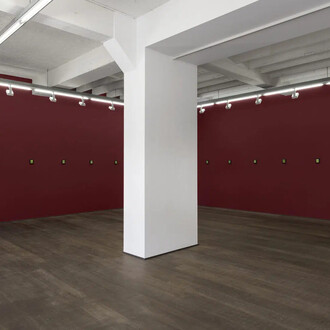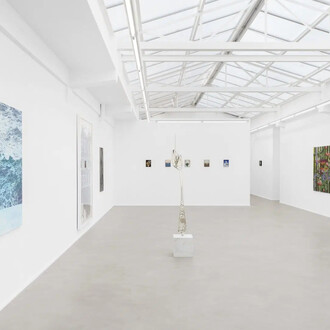MLF l Marie-Laure Fleisch is pleased to announce Alain Huck’s first solo exhibition in Belgium, Darkness of Heart. The series of works presented are exemplary of the artist’s ongoing investigations into man’s place in the world, and the often-destructive tendencies we have on our environment. Using a quote from Joseph Conrad’s eponymous 1899 novel as his primary inspiration for this exhibition, Huck questions what we know of the soul and how language and communication can skew one’s knowledge of the self. Conrad writes “his intelligence was perfectly clear… but his soul was mad”. Interested in this battle between good and bad, between heart and head, Huck looks into our own humanity, which often displays both destructive and poetic tendencies. This is investigated through a selection of unique works on paper, editions, and a video work.
Often inspired by literature and mythology, Huck’s most recent series of text-inspired drawings meets the visitor upon entering the gallery. “The dozen or so landscapes drawn in pencil by the Swiss artist are the result of his re-reading of “Heart of Darkness”[...]. Using views taken from Google Earth, Alain Huck has retraced the windings of the Congo river, which is central to the novel. The banks of the river have been rendered visible by copying the text in its entirety, starting from the end. Like the novel’s hero, who advances the deltas in a lucid and somewhat uncomfortable manner, Alain Huck takes the story with critical distance. He goes backwards, starting from the last word until the first, going from the end of the adventure to its beginning. On the page, the words are placed where the water does not run, drawing the landscape while revealing the deltas of the river through the white of the paper. The transcription of the text traces hollow rhizomes, vines of water, the wild flow. These unorganized markings reveal their author’s profound desire for freedom, rendering palpable the complexity of his being and his refusal to submit to the power of the Belgian invaders. It is impossible not to think of the impossibly straight borders of the African colonies – as if traced with a ruler, which Alain Huck opposes here with the force of untamed nature.” - Julie Enckell Juillard
Reflecting these works are two large-scale drawings, Exit Lingua and Culpa, on which the images are constructed through a process of protection, where the figurative elements are preserved as the artist covers the work in graphite lines. They also imply the tension between the thought process and the physical manifestation of mental activity. Words are seen as a protrusion from the body, with even the tongue becoming a foreign element which seems to belong to another being. In Culpa, the head emerges as a large, empty, bubble. In Exit Lingua, an oversized, foreign-seeming object is projected from a vacant head. Language becomes both the prolongation of the soul and an element which is foreign to the body. In both works, a pair of eyes appears, as if an exterior conscious is looking upon attentively.
Once downstairs, one is confronted with the video work Breath on Hemerocallis; the name of the plant evoking the passage of time or the beauty of a day. A large, anthropomorphic vegetal mass turns upon itself, slows down, and starts all over again repeatedly. Lit by the passage of the sun at the back of the artist’s studio, its shadow is projected on a wall. In the adjacent room, one discovers three editions Ancholia Ancholiae, Le Monde, 3 novembre 2015, and Fedor and Gustav. The first is a superposition of the four monumental drawings Huck did for his 2012 exhibition at the Centre Culturel Suisse in Paris, while the second is a play with the French newspaper Le Monde, where the publication’s title has been cropped to reveal the word “onde”, or wave. The third, Fedor and Gustav is the combination of “Crime and Punishment with “L’Origine du Monde” (alluded to here with a view of the Source of the Loue in Courbet’s region). In 1866 Dostoyevski published his text, and Courbet exhibited his controversial painting.















